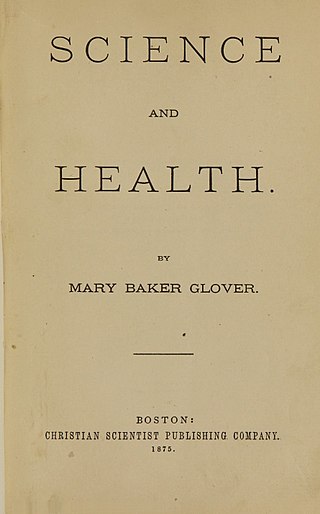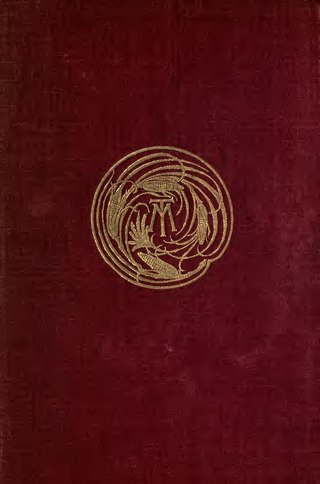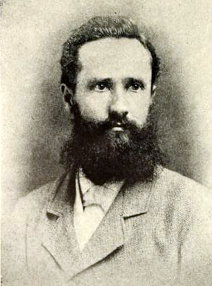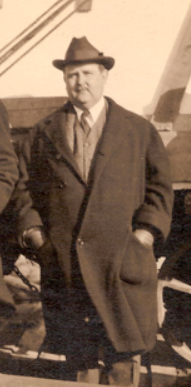
The Church of Christ, Scientist was founded in 1879 in Boston, Massachusetts, by Mary Baker Eddy, author of Science and Health with Key to the Scriptures, and founder of Christian Science. The church was founded "to commemorate the word and works of Christ Jesus" and "reinstate primitive Christianity and its lost element of healing".

Phineas Parkhurst Quimby was an American folk healer, mentalist and mesmerist. His work is widely recognized as foundational to the New Thought spiritual movement.

Science and Health with Key to the Scriptures by Mary Baker Eddy is the central text of the Christian Science religion, widely considered to be a "landmark work." Eddy called it her "most important work." Based solely on the Bible and the teachings of Jesus, its adherents believe Eddy's book illumines the spiritual laws of God in a reliable system of healing. Each Sunday the First Reader in Christian Science churches worldwide, states: "The Bible and Science and Health are our only preachers."

Mary Baker Eddy was an American religious leader, Christian healer, and author, who in 1879 founded The Church of Christ, Scientist, the Mother Church of the Christian Science movement. She also founded The Christian Science Monitor in 1908, and three religious magazines: the Christian Science Sentinel, The Christian Science Journal, and The Herald of Christian Science.

Christian Science is a set of beliefs and practices which are associated with members of the Church of Christ, Scientist. Adherents are commonly known as Christian Scientists or students of Christian Science, and the church is sometimes informally known as the Christian Science church. It was founded in 1879 in New England by Mary Baker Eddy, who wrote the 1875 book Science and Health with Key to the Scriptures, which outlined the theology of Christian Science. The book was originally called Science and Health; the subtitle with a Key to the Scriptures was added in 1883 and later amended to with Key to the Scriptures.
The New Thought movement is a new religious movement that coalesced in the United States in the early 19th century. New Thought was seen by its adherents as succeeding "ancient thought", accumulated wisdom and philosophy from a variety of origins, such as Ancient Greek, Roman, Egyptian, Chinese, Taoist, Hindu, and Buddhist cultures and their related belief systems, primarily regarding the interaction among thought, belief, consciousness in the human mind, and the effects of these within and beyond the human mind. Though no direct line of transmission is traceable, many adherents to New Thought in the 19th and 20th centuries claimed to be direct descendants of those systems.

Josephine Emma Curtis Hopkins was an American spiritual teacher and leader. She was involved in organizing the New Thought movement and was a theologian, teacher, writer, feminist, mystic, and healer; who taught and ordained hundreds of people, including notably many women. Hopkins was called the "teacher of teachers" and "mother of New Thought" because a number of her students went on to found their own churches or to become prominent in the New Thought Movement, including Charles and Myrtle Fillmore, founders of Unity Church; Ernest Holmes; and H. Emilie Cady, author of Unity's cornerstone text Lessons in Truth. According to Charles S. Braden, Hopkins influenced the development of New Thought "more than any other single teacher", and modern scholars have identified Hopkins as the founder of New Thought.

Christian Science is a 1907 book by the American writer Mark Twain (1835–1910). The book is a collection of essays Twain wrote about Christian Science, beginning with an article that was published in Cosmopolitan in 1899. Although Twain was interested in mental healing and the ideas behind Christian Science, he was hostile towards its founder, Mary Baker Eddy (1821–1910).

Eschatology is a New Thought movement founded by American writer and former practitioner William W. Walter. Walter was formally a member of the Catholic Church and then The First Church of Christ, Scientist until 1912 when he rejected organized religion in order to found his own metaphysical system. Although it is generally classified as a new religious movement, Walter did not see it as a religious movement, and his followers reject the association with religion. He originally named his organization "The Walter Method of Christian Science"; and the term Eschatology as a trademark for Walter's teaching was not used until the 1920s.
Christian Daa Larson (1874–1954) was an American New Thought leader and teacher, as well as a prolific author of metaphysical and New Thought books. He was credited by Horatio Dresser as being a founder in the New Thought movement. Many of Larson's books remain in print today, more than 100 years after they were first published, and his writings influenced notable New Thought authors and leaders, including Religious Science founder Ernest Holmes.

Horatio Willis Dresser was a New Thought religious leader and author in the United States. In 1919 he became a minister of General Convention of the Church of the New Jerusalem, and served briefly at a Swedenborgian church in Portland, Maine.

The Salem witchcraft trial of 1878, also known as the Ipswich witchcraft trial and the second Salem witch trial, was an American civil case held in May 1878 in Salem, Massachusetts, in which Lucretia L. S. Brown, an adherent of the Christian Science religion, accused fellow Christian Scientist Daniel H. Spofford of attempting to harm her through his "mesmeric" mental powers. By 1918, it was considered the last witchcraft trial held in the United States. The case garnered significant attention for its startling claims and the fact that it took place in Salem, the scene of the 1692 Salem witch trials. The judge dismissed the case.

Warren Felt Evans was an American author of the New Thought movement.
The history of New Thought started in the 1830s, with roots in the United States and England. As a spiritual movement with roots in metaphysical beliefs, New Thought has helped guide a variety of social changes throughout the 19th, 20th, and into the 21st centuries. Psychologist and philosopher William James labelled New Thought "the religion of healthy-mindedness" in his study on religion and science, The Varieties of Religious Experience.

John Valentine Dittemore was director of The First Church of Christ, Scientist, the Christian Science church, in Boston from 1909 until 1919. Before that he was head of the church's Committee on Publication in New York, and a trustee for ten years of the estate of Mary Baker Eddy (1821–1910), the founder of the church. Dittemore is best known as the co-author, with Ernest Sutherland Bates, of Mary Baker Eddy: The Truth and the Tradition (1932).
Annetta Gertrude Seabury Dresser (1843–1935) was an American writer and early leader of the New Thought movement. She became a "mind cure" practitioner, treating philosopher and writer William James, among others.
Samuel Putnam Bancroft, also known as Samuel P. Bancroft, was an American Christian Scientist and an early student of Mary Baker Eddy.

Adam Herbert Dickey, was an author, member of the Board of Directors of The First Church of Christ, Scientist, and a secretary to Mary Baker Eddy.

Numerous new religious movements have formed in the United States. A new religious movement (NRM) is a religious or spiritual group that has modern origins and is peripheral to its society's dominant religious culture. There is no single, agreed-upon criterion for defining a "new religious movement".
The Christian Science movement is a religious movement within Christianity founded by Mary Baker Eddy that arose in the mid to late 19th century and that led to the founding of The First Church of Christ, Scientist.













